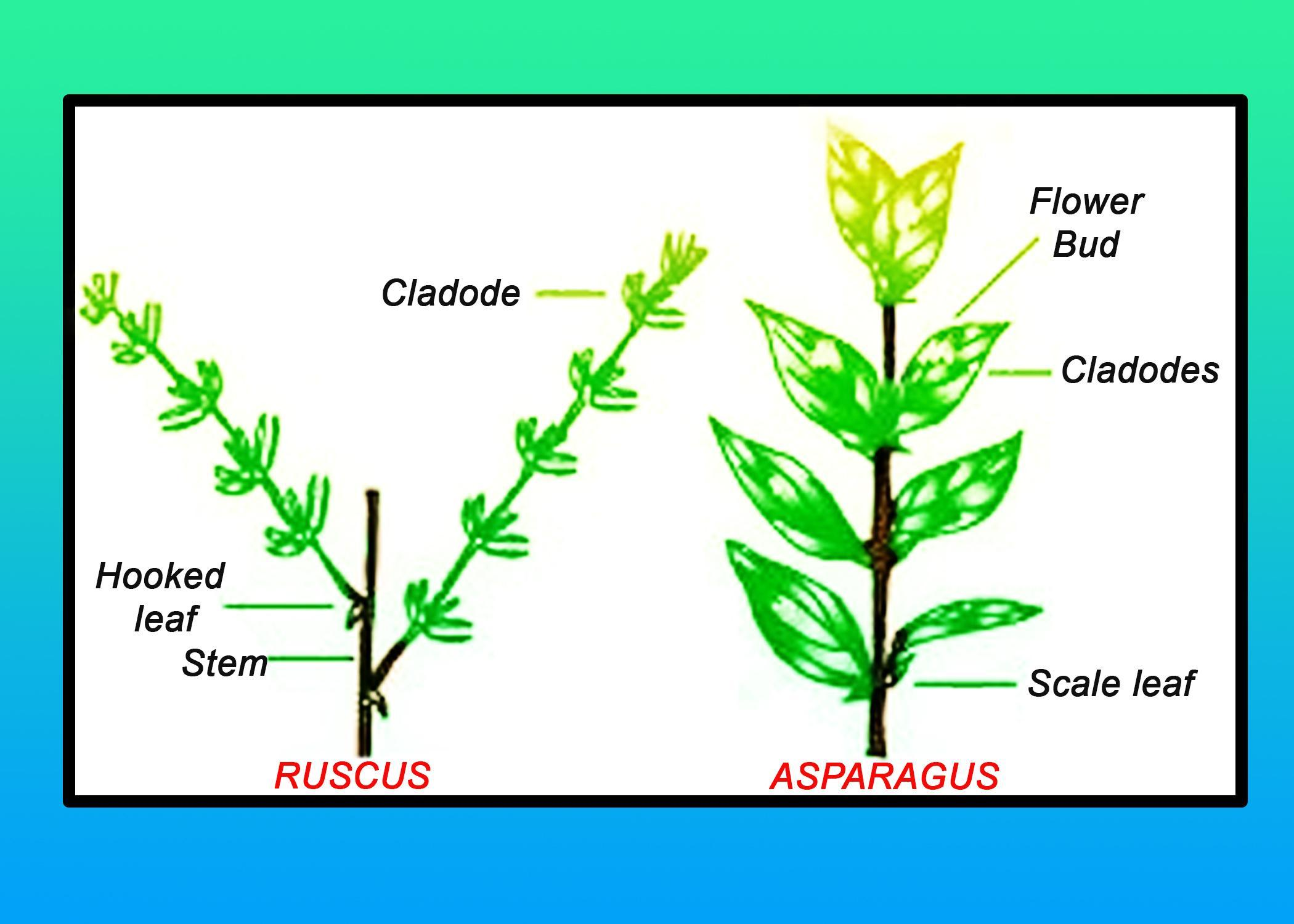Answer
378.3k+ views
Hint: The plant is tall with scale-like leaves emerging from the underground stem (rhizome) and has stout stems and feathery foliage. The flowers are bell-shaped and it occurs alone or in pairs. Its young shoots are mainly used as a spring vegetable.
Complete answer:
Asparagus species are erect or climbing, and most of the species are more or less woody. The rhizome-like, or sometimes tuberous, roots give rise to conspicuous fernlike branchlets. True leaves are reduced to small scales. Many species are dioecious (individuals are either male or female), and the small greenish-yellow flowers in the spring are followed by red berries in the fall. Members of the genus are characterized by the presence of cladodes, which are leaf-like organs in the axils of the true leaves. Cladode is a modified stem. In this, branches have limited growth. They become green and flat-like leaves. It is a morphological feature of Asparagus.

So, the correct answer is ‘Cladode’.
Additional information: Asparagus has low calories but boasts an impressive nutrient profile. Asparagus also possesses small amounts of other micronutrients, including iron, zinc, and riboflavin. Asparagus is like other green vegetables, which are high in antioxidants. These include Vitamin E, Vitamin C, and glutathione, as well as various flavonoids and polyphenols. Asparagus is particularly high in insoluble fiber, which adds bulk to stool and supports regular bowel movements. It also contains a small amount of soluble fiber, which dissolves in water and forms a gel-like substance in the digestive tract.
Note: Asparagus grows best in regions with hot days and cool nights and requires 90–150 days of cold temperature to break dormancy. It will grow in most soils as long as they are well-draining and will grow optimally at a pH between 6.5 and 7.0. It should be planted in a sunny location in the home garden and it is best to avoid low lying areas as a late frost will cause damage to newly emerged spears.
Complete answer:
Asparagus species are erect or climbing, and most of the species are more or less woody. The rhizome-like, or sometimes tuberous, roots give rise to conspicuous fernlike branchlets. True leaves are reduced to small scales. Many species are dioecious (individuals are either male or female), and the small greenish-yellow flowers in the spring are followed by red berries in the fall. Members of the genus are characterized by the presence of cladodes, which are leaf-like organs in the axils of the true leaves. Cladode is a modified stem. In this, branches have limited growth. They become green and flat-like leaves. It is a morphological feature of Asparagus.

So, the correct answer is ‘Cladode’.
Additional information: Asparagus has low calories but boasts an impressive nutrient profile. Asparagus also possesses small amounts of other micronutrients, including iron, zinc, and riboflavin. Asparagus is like other green vegetables, which are high in antioxidants. These include Vitamin E, Vitamin C, and glutathione, as well as various flavonoids and polyphenols. Asparagus is particularly high in insoluble fiber, which adds bulk to stool and supports regular bowel movements. It also contains a small amount of soluble fiber, which dissolves in water and forms a gel-like substance in the digestive tract.
Note: Asparagus grows best in regions with hot days and cool nights and requires 90–150 days of cold temperature to break dormancy. It will grow in most soils as long as they are well-draining and will grow optimally at a pH between 6.5 and 7.0. It should be planted in a sunny location in the home garden and it is best to avoid low lying areas as a late frost will cause damage to newly emerged spears.
Recently Updated Pages
How do you arrange NH4 + BF3 H2O C2H2 in increasing class 11 chemistry CBSE

Is H mCT and q mCT the same thing If so which is more class 11 chemistry CBSE

What are the possible quantum number for the last outermost class 11 chemistry CBSE

Is C2 paramagnetic or diamagnetic class 11 chemistry CBSE

What happens when entropy reaches maximum class 11 chemistry JEE_Main

Calculate the volume occupied by 88 gram of CO2 at class 11 chemistry CBSE

Trending doubts
Difference Between Plant Cell and Animal Cell

Difference between Prokaryotic cell and Eukaryotic class 11 biology CBSE

Fill the blanks with the suitable prepositions 1 The class 9 english CBSE

Fill the blanks with proper collective nouns 1 A of class 10 english CBSE

Change the following sentences into negative and interrogative class 10 english CBSE

Select the word that is correctly spelled a Twelveth class 10 english CBSE

What organs are located on the left side of your body class 11 biology CBSE

What is the z value for a 90 95 and 99 percent confidence class 11 maths CBSE

Give 10 examples for herbs , shrubs , climbers , creepers



